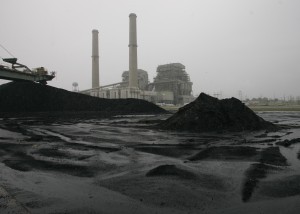We released a new report today that shows that shifting from coal power to alternative energy sources could save utilities – and indirectly their customers – several billion dollars in capital and annual operating expenses. The switch also would save the Texas public as much as $2.5 billion in pollution-related health care costs and economic losses due to premature mortality.
Using data from government, academic and industry studies, the report demonstrates that renewables like solar, wind and geothermal power are cheaper than coal, once the costs of upgrading plants to control pollution are factored in.
Renewables are a clean, safe and financially smart alternative to coal. Our report shows that replacing our oldest, dirtiest coal plants with alternative energy sources could save 21 to 24 percent in capital and annual operating costs. It’s no longer clean energy that’s expensive. Now coal is too costly to continue.
In coming years, six new or amended U.S. Environmental Protection Agency (EPA) rules will take effect, including the EPA’s tougher ozone standard for Texas, which was discussed during a January EPA hearing in Arlington. The EPA’s Clean Power Plan, proposed in June, will require Texas coal plants to reduce climate-change inducing carbon dioxide emissions, and other new rules will reduce levels of highly toxic mercury, make sure coal ash is disposed of safely and cut down on haze, which obscures views at national parks such as Texas’ Big Bend and Guadalupe Mountains.
But while the long overdue rules will protect the climate and dramatically reduce health care costs, outdated coal plants will have to spend billions in capital and operating costs for pollution-control technology. We compared the cost of alternative energy sources to the price of coal power, once the expense of upgrading to meet new pollution rules is included.
The upshot: A blend of wind, solar and geothermal power, along with some natural gas, could easily replace the power generated by coal plants – and for less money.
With Luminant’s parent company Energy Future Holdings (EFH) in the middle of bankruptcy proceedings, these findings are vital. By retiring its outdated coal plants and replacing them with renewables, EFH, or new owners under the bankruptcy, could save money and protect public health. If EFH were to act before the end of 2016, it could take advantage of federal tax credits that would cover 30 percent of the cost of building solar generation and 10 percent of cost of constructing geothermal facilities.
Our report, based on analysis of several government, academic and industry studies, demonstrates that:
- Many alternative energy sources, including geothermal, wind and solar, are cheaper than coal when the “levelized” costs – capital and operating expenses and fuel costs over the lifetime of the energy source – are taken into consideration. The average “levelized” cost of wind is $36.75-$44 per megawatt-hour (MW/h); the levelized cost for solar in West Texas is $52.26 MW/h, while the cost of coal, even without pollution control technology, is $66.34 MW/h. With the most advanced technology for ozone control, known as selective catalytic reduction, the cost of coal rises to $72.42.
- A mix of geothermal, wind and solar power and some natural gas power can produce a year’s worth of energy for 21 to 24 percent less than it would cost at three of Texas’s dirtiest plants: Luminant Energy’s Big Brown, Monticello, and Martin Lake facilities.
- Using clean renewables instead of coal would protect the health and pocketbooks of Texas residents. Dr. Robert Haley, an epidemiologist and former president and board chairman of the Dallas County Medical Society, testified at the Jan. 29 EPA hearing on a newstudy on the high cost of ozone pollution in 10 North Texas counties. The study showed that if the ozone standard had been 10 parts per billion (ppb) lower in 2008 – 65 ppb rather than 75 ppb – the 10-county region would have experienced 320 fewer hospitalizations, $10 million less in hospitalization costs, 77 fewer premature deaths and $617 million less in economic loss from premature death.
- A report by the national nonprofit Clean Air Task Force estimated that coal plant pollution costs Texas nearly $2.5 billion annually because of pollution-related heart attacks, asthma, chronic bronchitis, hospital and emergency room visits, and premature mortality. The group’s data also show costs of coal plant pollution by individual plants: Big Brown, $426 million annually; Monticello, $234 million annually; Martin Lake, $372 million annually.
In a fair, free market, continuing to run outdated coal plants would no longer be economically feasible.



